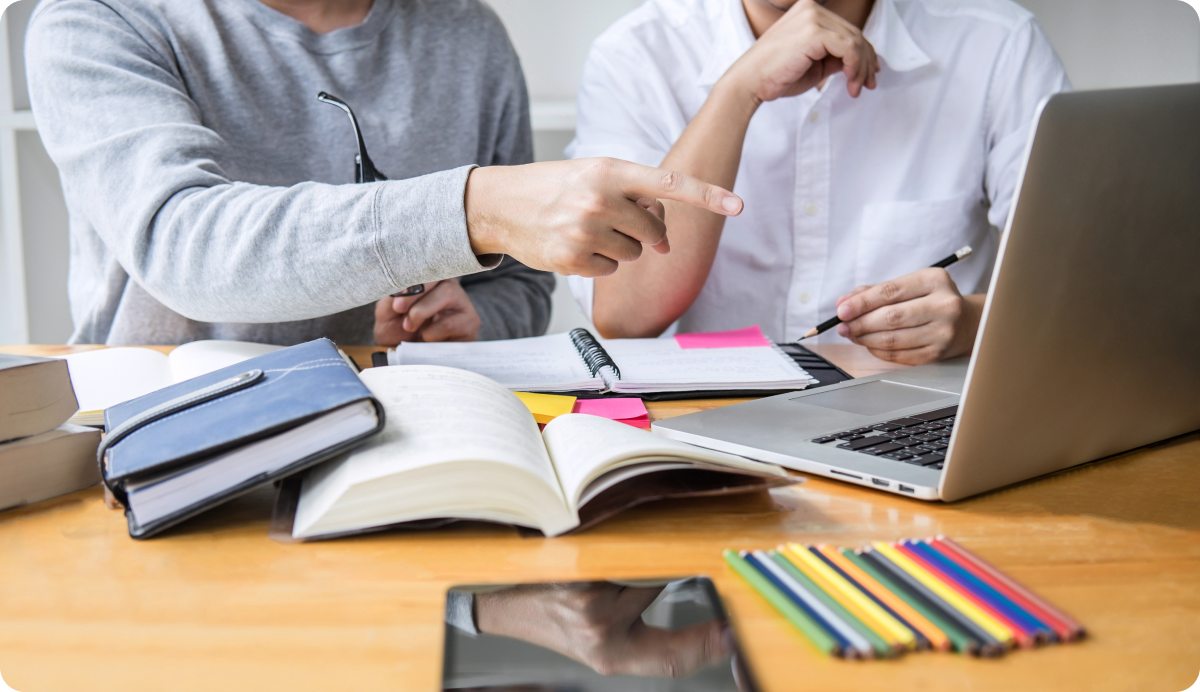When educators work together, they can achieve incredible results for their students. Dr. Carrie Leana, George H. Love, Professor of Organizations and Management at the University of Pittsburgh, suggests that meaningful teacher collaboration could be The Missing Link in School Reform. We sat down with Dr. Leana during this recent webinar to better understand her extensive research around the impact of teacher collaboration on student outcomes. We spoke with Wendy Anderson as well to understand common barriers hindering its effectiveness and potential strategies for overcoming these obstacles to create a culture of collaboration in schools. Later, we analyzed the correlation between teacher skill development and student success, and how implementing certain tools into the learning environment can empower students and educators alike.
Importance of Teacher Collaboration
Through her study with New York City public school teachers, Dr. Leana demonstrated how robust social capital amplifies the impact of teacher ability on student achievement, particularly benefiting less-experienced educators. “When economists talk about capital, those are really resources that any organization brings to bear to try to do what they do well. And there’s a couple of different buckets there,” explained Dr. Leana. “Human capital involves the resources that are embedded in individuals. Things like their knowledge, their skills, their capabilities. And you really enhance human capital through education and experience. So for teachers, what you’re doing every day is improving the human capital, the kids in your classroom. Social capital is different. These are the resources that are embedded in relationships. Things like what’s the value of sharing information? How does trust enhance what we do? If we have the same goals, how does that make us better at what we do? So social capital is really created through interactions and shared experiences.”
Dr. Leana’s research underscores the profound connection between teacher collaboration and student achievement. By combining human capital with social capital, you can cultivate meaningful teacher collaboration — creating a synergistic environment conducive to more academic success.

Barriers to Meaningful Teacher Collaboration
Collaborating with peers may seem like a simple task for teachers, but there are many factors that make this a tricky process. Some classic collaboration barriers in an educational setting include:
- A sense of isolation
- Limited time in a workday
- High teacher turnover
- Unclear roles
- Procedural confusion
- A lack of leadership support

And given the prevalence of remote and hybrid learning opportunities, teacher collaboration has only become more complex and complicated in recent years. Each of these obstacles make it challenging to establish connected teacher communities and to work together towards common goals.
How to Overcome These Barriers
To navigate these challenges, schools must prioritize and invest in strategies that promote effective collaboration. Allocating dedicated time within the school day for collaborative activities allows educators to engage meaningfully without encroaching on instructional hours. Overt displays of leadership support plays a pivotal role in fostering a collaborative culture. Administrators must recognize and champion collaborative efforts, actively participating in teams and providing resources for teacher professional development. By establishing clear expectations and fostering a supportive environment, leaders can empower educators to collaborate effectively and drive positive change.

Dr. Leana also suggested a few strategies that are catered more specifically to teachers’ abilities. “Frequent and close interactions with peers, maybe a handful of people that you work well with, that’s really good for high-ability teachers,” she explains. “Dense ties, everybody talking, really good for low-ability teachers. So dense ties benefit less-able teachers, strong ties benefit more-able teachers.”
How Technology Can Spur Teacher Collaboration
To best support these collaboration strategies, you’ll need to find the right tools that can implement these strategies as well as measure their effectiveness. “One of the [topics] we were interested in is how do you know when there is good social capital in the schools? How do you know when people have good connections?,” recalled Dr. Leana. “You have to be able to measure it before you can account for its effects.”
Virtual collaboration platforms provide educators with a space to connect, share best practices, and collaborate beyond physical constraints. Solutions like GoReact facilitate communication and feedback among educators — promoting teacher skill development, as well as enabling seamless collaboration and providing unique ways to track and measure the quality of that collaboration. By leveraging technology, schools can bridge geographical distances, accommodate diverse schedules, and amplify the impact of collaborative efforts.
Boost Student Outcomes Through Teacher Professional Development
Teacher collaboration could truly be the missing link of educational excellence and an incredible opportunity to shape the learning experiences and outcomes of students. By addressing collaboration barriers, fostering social capital, and leveraging teacher skill development technology, schools can cultivate a culture of collaboration that enhances teaching practices and elevates student achievement. As Dr. Leana has emphasized, the journey towards school improvement begins with meaningful interactions and trust among educators.











